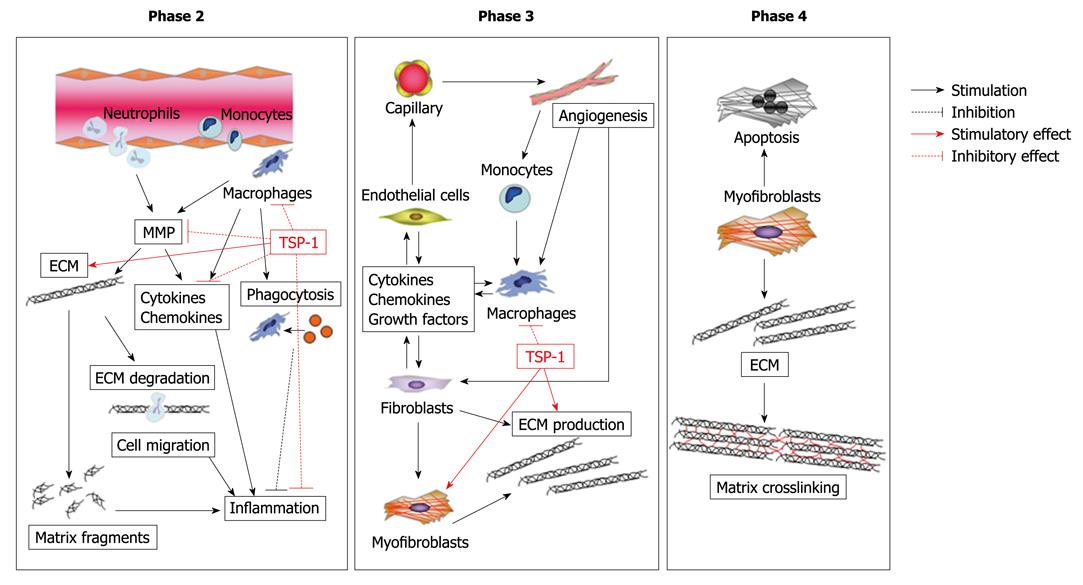Copyright
©2010 Baishideng Publishing Group Co.
World J Biol Chem. May 26, 2010; 1(5): 69-80
Published online May 26, 2010. doi: 10.4331/wjbc.v1.i5.69
Published online May 26, 2010. doi: 10.4331/wjbc.v1.i5.69
Figure 3 Possible role of thrombospondin-1 (TSP-1) in cardiac healing and remodeling after MI.
Expression of TSP-1 works as a barrier that suppresses inflammatory chemokines and cytokines via its transforming growth factor-β1 (TGF-β1)-activating effect, thereby preventing extension of the inflammatory process into the non-infarcted region. In addition, TSP-1 could affect maturation of the infarct scar through the activation of TGF-β1 and inhibition of MMP activity.
- Citation: Matsui Y, Morimoto J, Uede T. Role of matricellular proteins in cardiac tissue remodeling after myocardial infarction. World J Biol Chem 2010; 1(5): 69-80
- URL: https://www.wjgnet.com/1949-8454/full/v1/i5/69.htm
- DOI: https://dx.doi.org/10.4331/wjbc.v1.i5.69









